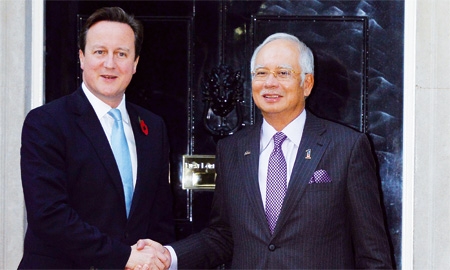The European Union mission in Singapore launched a new business support programme in July that aims to assist small and medium-sized companies from the EU looking to enter or expand their businesses in Southeast Asia.
Meanwhile, the scale of US investment in Asean (Association of Southeast Asian Nations, which comprises Brunei Darussalam, Cambodia, Indonesia, Laos, Malaysia, Myanmar, the Philippines, Singapore, Thailand and Vietnam) recently surpassed the total of US investment in China, India, South Korea, Hong Kong, Taiwan and New Zealand combined. It now amounts to a third of total US investment abroad.
Having weathered the 2008 crisis better than other regions, Asean nations seem well on their way to becoming the third pillar of Asia’s growth, alongside China and India. With a combined population of 630 million, they have averaged real gross domestic product growth of 6 per cent a year for the past 15 years. If it were a single country, Asean would rank as the world’s seventh largest economy – ahead of India – with a combined GDP of $2.4 trillion in 2013.
Over the same time period, Malaysia has managed to shift from a low-skilled, low-wage manufacturing country to an open, knowledge-based, upper-middle-income economy. In 2015 it will take the chairmanship of Asean at a critical time when the new Asean Economic Community (AEC) will enter into force. “We may not be able to achieve full economic integration at once, but we are collectively solid and Malaysia will become a major beneficiary of the AEC,” says Dato’ Seri Abdul Wahid Omar, Minister of Economic Planning at the Prime Minister’s Office.
“Regional economic integration will create a new basis for growth in the region and new investment opportunities for us,” adds Tan Sri Dr Mohd Shukor Mahfar, CEO and Director General of the Inland Revenue Board of Malaysia (IRBM).
Malaysia aims to build on its location at the centre of Southeast Asia, its robust economy – with growth forecast to again exceed 6 per cent for 2014 – and its pro-business environment to further enhance its role as an investment gateway to Asean countries. “But we are not promoting Malaysia as a better investment place because labour is cheap; we are promoting the country as a location where you can drive your business through technology,” stresses Tan Sri Amirsham A Aziz, Chairman of the Malaysian Investment Development Authority (MIDA).
“Technology is the DNA of the economic revolution under way here,” says Tan Sri Irwan Serigar Abdullah, Secretary General of the Treasury. “The government aims at increasing the income per capita to $15,000 by 2020. We are on the right track, as shown by the business environment and the level of confidence of the private sector.”
Fostering the creation of tech enterprises and increasing the workforce’s skills is only one axis of the New Economic Model (NEM) launched in 2010 to accelerate the transformation of the country. An additional key aspect of the plan is to boost foreign investment and attract foreign companies. Already, Cyberjaya, the smart city situated on the Multimedia Super Corridor (MSC), 50km south of Kuala Lumpur, has 25 multinational companies.
Another crucial factor is the business-friendly environment, a concept that encompasses taxation, juridical safety, bureaucracy and transparency. “Malaysia offers a competitive tax rate for international companies, in particular five-year tax exemptions in specifically promoted sectors or geographical areas. We also offer simplified procedures and red tape and a strong, reliable institutional system,” explains Dr Mohd of the IRBM.
In a move that few governments in the world would dare to emulate, last year Prime Minister Najib Razak created a Ministry of Transparency and to lead it he called on the president of the widely respected NGO Transparency International in Malaysia, Datuk Paul Low.
“The environment has completely changed. Businesses understand that in order to attain our goals for 2020, we need more meritocracy, transparency and good governance,” says Mr Low. One example of the actions undertaken by his ministry is a draft corporate liability law, which states that a company is responsible unless proven otherwise, for instance in the case of bribery.
On top of the list of foreign investors courted by Malaysia is the UK. “Prime Minister Cameron and I pledged to increase investment and double the value of our bilateral trade to £8 billion by 2016,” declared Mr Razak recently. “For some countries history is a barrier but we prefer to see it as a bridge, and our ties are stronger than ever.”

0 COMMENTS